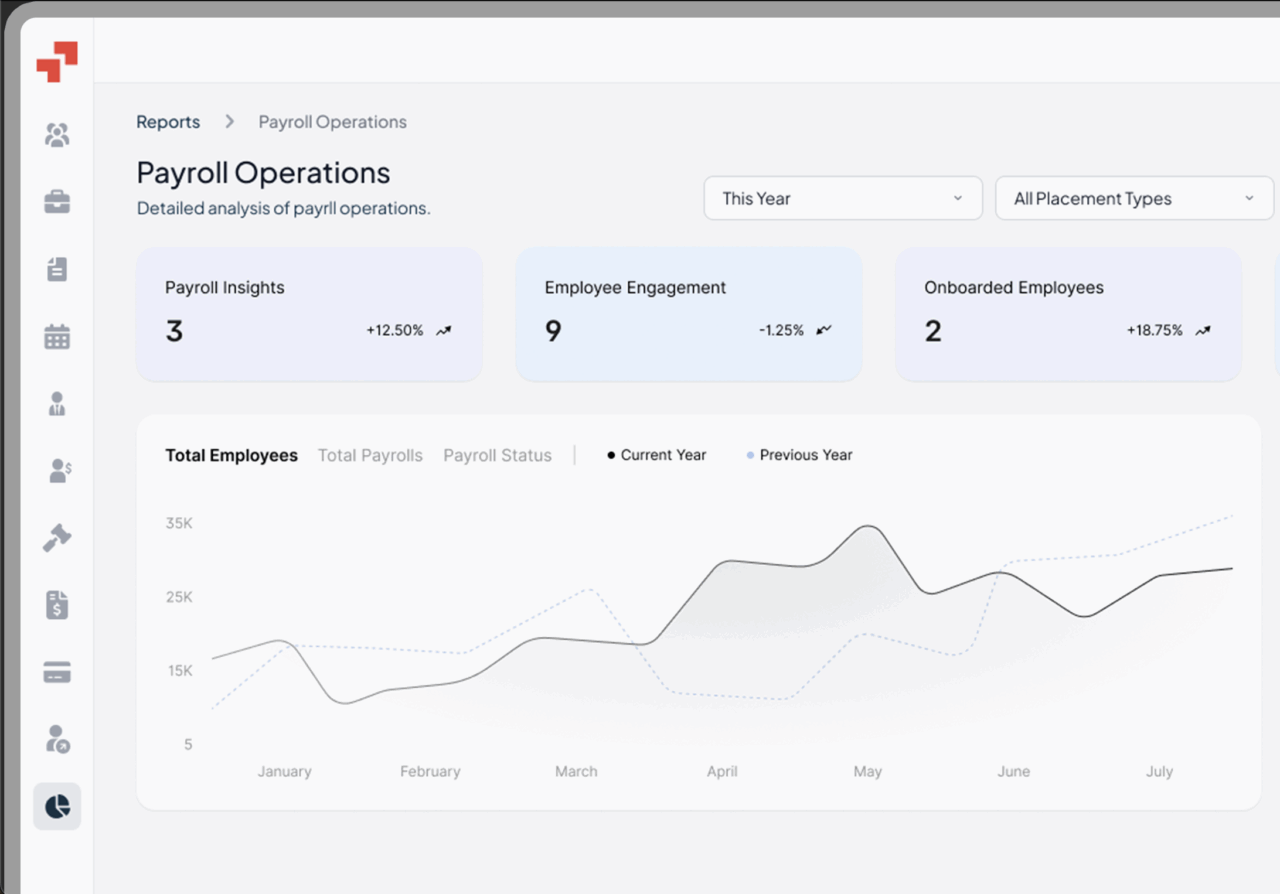Global Workforce GlossaryDirect Compensation
In every successful organization, pay isn’t just about numbers—it’s about value, recognition, and performance. Direct compensation plays a pivotal role in aligning employee goals with business outcomes, ensuring people are rewarded for the impact they create. When designed thoughtfully, it strengthens trust, enhances productivity, and fosters a results-driven culture.
Table of Contents
- What is Direct Compensation?
- What are the Types of Direct Compensation?
- Direct compensation plan
- What are the Benefits of Direct Compensation?
- What are the Components of Direct Compensation
- What are the 3 Main Elements of Direct Compensation?
- What is the Difference between Direct Compensation and Indirect Compensation?
- What is Indirect Compensation for Employees?
- How does Direct Compensation Impact Business?
- The Importance of Offering Competitive Direct Compensation
- Examples of Direct Compensation
- Practical Example: Direct Compensation in Action
- How PamGro Helps with Direct Compensation
What is Direct compensation?
Direct compensation is the payment employees receive directly from their employer in exchange for their work, such as salaries, wages, bonuses, or commissions.
It forms the core of an employee’s total compensation package and is usually monetary. Direct compensation is a key factor in attracting and retaining top talent, as it clearly reflects how much a company values its workforce.
Beyond the paycheck, direct compensation helps set benchmarks for internal equity and external competitiveness. Companies often use compensation management strategies to ensure fairness, transparency, and compliance while aligning pay with organizational goals.
What are the Types of Direct Compensation?
Internal career mobility happens when employees move to new roles within the same company. It can include promotions, lateral moves, or project-based assignments. Internal mobility is one of the most effective career mobility programs because it supports both career advancement and employee engagement.
Organizations that prioritize internal career mobility open career mobility opportunities for employees while improving employee retention and reducing external hiring costs. Employees benefit from development opportunities that align with their career goals. By building career pathways and investing in continuous learning, businesses create an adaptable workforce that thrives in dynamic markets.
Direct compensation plan
A direct employee compensation plan is the structured framework a company uses to determine how employees are paid. It covers base salary ranges, incentive structures, bonus eligibility, and performance-based rewards.
An effective compensation plan balances fairness, competitiveness, and business sustainability. For global companies, direct compensation plans must also account for local labor laws, tax implications, and market conditions. With the right plan in place, businesses can ensure consistency, attract skilled professionals, and maintain compliance across borders.
What are the Benefits of Direct Compensation?
The benefits of direct compensation go beyond financial rewards. Competitive salaries and bonuses help employers attract high-quality candidates, reduce turnover, and improve employee satisfaction. Employees feel valued when compensation is transparent and aligned with employee’s performance.
For businesses, strong compensation packages improve employer branding and overall productivity. Companies that invest in direct compensation often experience higher engagement levels, which directly contribute to long-term growth. Society for Human Resource Management (SHRM) emphasizes that fair pay practices are essential for employee retention.
What are the Components of Direct Compensation?
Direct compensation typically includes four components: base salary, variable pay (commissions and incentives), bonuses, and equity or stock options. Together, these components create a comprehensive compensation package.
Each component addresses different needs: base salary ensures stability, bonuses reward short-term achievements, and equity links employees to the company’s long-term success. By balancing these elements, employers can design compensation strategies that motivate employees at multiple levels.
What are the 3 Main Elements of Direct Compensation?
The three main elements of direct compensation are base pay, incentive pay, and bonuses. Base pay ensures predictable income, incentives drive performance, and bonuses recognize specific achievements.
These elements often vary by industry and employee level. For instance, a sales executive may rely more on commissions, while a software engineer values base pay and equity options. Employers must carefully align these elements with both employee expectations and organizational objectives.
What is the Difference between Direct Compensation and Indirect Compensation?
Direct compensation refers to monetary payments like wages, salaries, and bonuses, while indirect compensation refers to non-monetary benefits such as health insurance, retirement plans, company cars, or childcare assistance.
Both forms are critical to total rewards, but they serve different purposes. Direct compensation drives immediate financial security, whereas indirect benefits improve overall quality of life and job satisfaction. Together, they make up a complete compensation strategy. U.S. Department of Labor highlights the importance of combining both for workforce well-being.
What is Indirect Compensation for Employees?
Indirect compensation includes all non-cash benefits provided to employees, such as health insurance, retirement contributions, paid leave, flexible working arrangements, non monetary perks or childcare support. While not part of an employee’s paycheck, these perks significantly impact satisfaction and retention.
Employers often use indirect compensation to differentiate themselves in competitive markets. A well-designed mix of direct and indirect compensation ensures employees feel supported financially and personally, contributing to higher loyalty and engagement
How does Direct Compensation Impact Business?
Direct compensation directly influences talent attraction, employee motivation, and organizational performance. Competitive pay packages give companies an edge in hiring skilled professionals, while fair wages reduce turnover and legal risks.
For employees, direct compensation is often the most visible measure of recognition. When aligned with performance, it boosts morale and drives productivity. For businesses, this translates into better financial results and a stronger market reputation.
The Importance of Offering Competitive Direct Compensation
Offering competitive direct compensation is essential to building a motivated, high-performing workforce. In a global market, employees often compare pay structures across industries and geographies. If businesses fail to match market standards, they risk losing top talent.
Competitive compensation also demonstrates fairness and compliance with labor regulations. It signals to employees that their contributions are valued, fostering loyalty and engagement. For international hiring, employers must adapt compensation strategies to local benchmarks to remain competitive worldwide.
Examples of Direct Compensation
Examples of direct compensation, along with additional compensation, include annual salaries, hourly wages, overtime pay, sales commissions, performance bonuses, equity grants, and stock options. All of these directly increase an employee’s income.
For instance, a project manager may earn a base salary with annual bonuses, while a sales professional earns commissions in addition to their wage that the employee earns . Equity and stock options are also direct compensation because they have financial value tied to the employee’s contribution to the business.
Practical Example: Direct Compensation in Action
A fast-growing SaaS startup expanding into multiple countries needs to create a competitive compensation package to attract engineers and sales teams. Instead of offering only base salaries, the company designs a direct compensation plan with three layers: stable salaries for predictability, performance-based bonuses to drive results, and equity grants to build long-term loyalty.
Within six months, the company sees improved hiring outcomes, higher employee engagement, and stronger retention. By balancing stability with incentives, the startup not only attracts global talent but also aligns employee goals with its growth trajectory.
How PamGro Helps with Direct Compensation
Managing direct compensation across multiple countries can be complex. Different tax systems, compliance requirements, and market benchmarks make it challenging for businesses to offer competitive and compliant pay packages.
PamGro simplifies this process by acting as your global Employer of Record (EOR). We ensure your employees are paid accurately, on time, and in line with local regulations. From setting up fair direct compensation plans to managing payroll, equity, and benefits, PamGro provides end-to-end support for global workforce management.
With PamGro, you can confidently expand into new markets, attract international talent, and offer compensation packages, including wellness programs, that meet global standards—all without the burden of setting up foreign legal entities.
Hire the Best Talent, Anywhere






